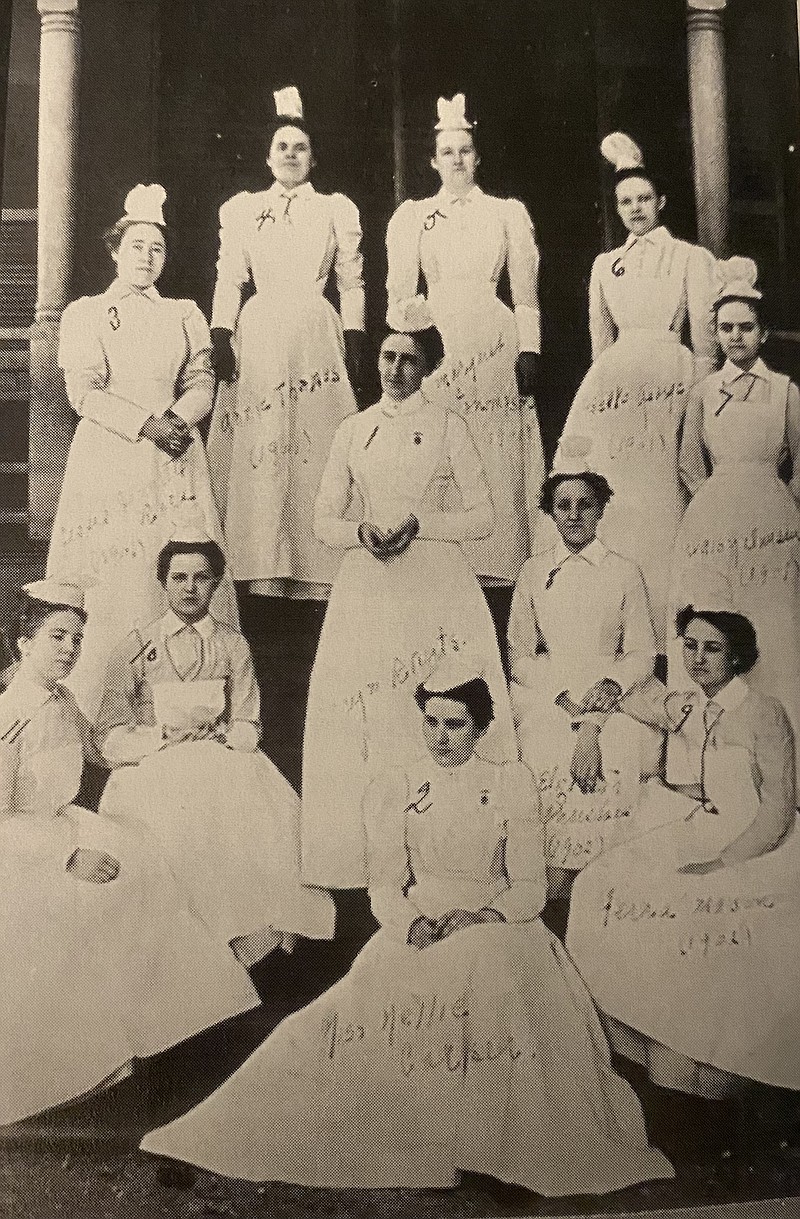(Editor's note: Third in a series)
In the late 19th century, the idea of entering a hospital was viewed with hesitancy and often with fear. Hospitals were often considered to be "places where one simply went to die" and were avoided if at all possible. Doctors made house calls, and if a patient was not financially able to pay for medical services, he or she often was forced to rely upon the skills of "home care" from a family member. By 1900, Erlanger had helped to change that perception for Chattanooga residents.
In January 1902, according to The Baroness Collection, 20 private and 33 charity patients were cared for at Erlanger as the hospital continued to open rooms. Even with capital expenditures, Erlanger's monthly expenses were maintained at about $1,000 as Supt. Charles Connor and lead nurse Jeanette Rose carefully studied expenditures. Capt. H.S. Chamberlain, A.J. Gahagan, A.W. Gaines and E.Y. Chapin served as hospital trustees in 1907. Later that year, prominent Chattanooga resident Frank Rees was killed in an automobile accident, leaving a trust to Erlanger earmarked for indigent care. Using the interest from the trust, the board chose to establish a ward for female charity patients. Erlanger had committed itself to continuing to care for the city's patients, regardless of ability to pay.
By 1914, hospital admissions were increasing dramatically, and local physicians including Dr. J.H. Barnett, Dr. H.O. Hull and Dr. W.F. McManus advocated for increased funding, modernized equipment and additional experienced nurses. A $100,000 bond issue coupled with the selection of Dr. W.E. Raht as the new superintendent resulted in the construction of an annex and the completion of the original central building, allowing more space for patient rooms and intern education.
The new patient rooms were equipped with suspended buttons that could be pressed to ring the nurses' station. Patient rooms were divided into male and female wards, and the top floor of the east wing was reserved for children. Increased donations and conservative financial management by hospital administrators over the next decades allowed the hospital to continue growing and to expand its indispensable three-year nursing school, providing fees to help support the hospital and a steady stream of well-trained nurses for patient care. The black band on the distinctive Erlanger nursing school cap along with the Erlanger nursing pin became visible badges of accomplishment.
A children's hospital, spearheaded by former Chattanooga Mayor T.C. Thompson and the Chattanooga Civitan Club with initial funding provided by industrialist C.I. Hutcheson and revenue from an approved bond issue, opened on July 15, 1929. The first patient admitted was a 2-year-old child, born with club feet, whose surgery was provided by the Chattanooga Kiwanis Auxiliary. When the child walked out of the hospital, she wore new shoes also provided by the Kiwanis Auxiliary. On-site clinics provided health care for children six days a week, with an orthopedic clinic offering equipment specifically designed for young patients. During those early years of Children's Hospital, the majority of the patients were charity cases, often residents of the Vine Street Orphanage.
Chattanooga's public hospital struggled to raise sufficient funding to provide quality health care, allocate capital expenditures and attract the most skilled professionals. After the stock market crash of 1929, there were moments of despair as more and more area residents found themselves without jobs and income. The hospital medical staff decried the conditions, and the American Medical Association offered suggestions for improvements, each of which would require funds not readily available.
In 1932, the Chattanooga- Hamilton County Medical Society appeared before the city and county to request increased funding as a new board of trustees was announced. T.C. Thompson, Alf Whiteside, Sam McAllister, Bartow Strang and Newt Logan publicly pledged to improve services for "all residents." By the end of the year, the hospital had regained its A-1 rating and had an average daily occupancy of 169, with the capacity of 240 patients.
But funding continued to be inadequate. By 1936, elected officials and civic leaders appealed to state and federal governments; a delegation met with President Franklin D. Roosevelt, but no federal funds were appropriated. Board Chairman McAllister reported an annual cost of $200,000, with city and county allocations of $82,000; given the funding levels, McAllister worried that Erlanger could not sustain its commitment to indigent care for long.
In an era of uncertainty, Erlanger's future appeared uncertain.
Linda Moss Mines, the Chattanooga and Hamilton County historian, is an Erlanger trustee and honorary regent, Chief John Ross Chapter, NSDAR. Visit chattahistoricalassoc.org for more information.
